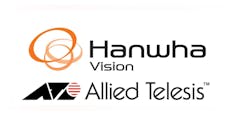Power over Ethernet (PoE) continues to impact the way system designers and installers think about deploying power for professional security applications. Rather than specifying conventional power supplies, integrators are increasingly using PoE network switches or incorporating PoE midspan injectors, which inject power into an Ethernet cable after it leaves the switch and before it reaches the connected edge devices.
When working with PoE, it is easy to underestimate power consumption of the system’s edge devices. That’s why it is important that the power sourcing equipment matches the specifications of each powered device.
There are currently two established standards for PoE: IEEE 802.3af (PoE) and IEEE 802.3at (PoE+). PoE provides 15W with 12.95W available to power network cameras and other devices over either the data pairs (mode A) or spare pairs (mode B), depending on the design of the power source. PoE+ provides up to 30W over either mode with 25.5W available to provide the extra power needed to operate PTZ cameras with heater/blowers for outdoor application, as well as other devices.
The Latest PoE Option
While these are the only official standards presently, there is also a third PoE option, referred to as Hi-PoE (aka Ultra PoE, High PoE, PoE++, and others due to the fact there is no standard yet) that provides even more power to be delivered over the same infrastructure used for PoE and PoE+. Because devices can receive power in either mode A or mode B, special midspan injectors make Hi-PoE possible by allowing transmission using both methods to deliver 60 watts, which is double the capacity of PoE+.
Additionally, Hi-PoE (60W) can be delivered to the edge and distributed to multiple devices using solutions such as the NetWay4ES PoE switch from Altronix. This increased power has several positive implications for our industry. With the additional power available from Hi-PoE, surveillance cameras and other edge devices can now incorporate more features and functions with increased performance.
Target Applications
Outdoor installations are the most ideal uses for Hi-PoE today. In general, a standard camera with a heater/blower will operate well using PoE+; however, in extreme environments where the temperature may get much higher or lower than typical locations, more power is required to keep the camera warm or cool enough to function properly. With PoE+, a separate power supply with a dedicated cable — and the added cost of installing it — would be needed to operate the larger, more powerful heaters required for extreme conditions. With double the wattage available than PoE+, Hi-PoE can easily supply the power required by heater/blowers.
Another practical use for Hi-PoE is to provide enhanced infrared (IR) lighting. Naturally, the size and intensity of an IR illuminator built into a camera is restricted by the available power, making it challenging to integrate high-intensity IR illumination with PoE and PoE+. The only option in these cases would be an external illuminator with a separate power source. Hi-PoE can eliminate that restriction, allowing manufacturers to incorporate higher-intensity IR illuminators into cameras without fear of compromising performance. Because more IR illumination enables a camera to see better and further in low-light or total darkness, Hi-PoE can theoretically increase a camera’s performance and effectiveness without additional infrastructure and equipment costs.
There are a number of midspan injectors on the market that provide Hi-PoE functionality, many of which are manufactured for indoor use, meaning they simply will not perform adequately outdoors. In order to successfully deploy Hi-PoE solutions in outdoor environments, it is crucial to use an injector that is designed specifically to withstand the elements and provide adequate power.
Lack of Standards
Another important thing to note about Hi-PoE is that while the total output is technically 60W, this is primarily delivered using two separate 30W PoE+ feeds transmitted from a single port. The main reason this method is used is because IEEE currently has no established standard for the technology. So while manufacturers know that “pure” Hi-PoE works, they may be cautious about implementing it into devices without a standard in place. Instead, they typically are adhering to existing standards by delivering 60W PoE using two PoE+ feeds.
As a result of this methodology, even though a specification may say 60W — which is 100-percent accurate — it is important to account for voltage drop along CAT5E or CAT6 applying distance limitations associated with the PoE+ standard.
As we have seen in the industry in recent years, there are myriad security solutions that take advantage of PoE and PoE+, including video surveillance, access control, infrared illumination and more. Hi-PoE enables manufacturers to increase the capabilities of their cameras without the added cost of extra power sources and the cabling to support them. These additional functions enable more powerful, effective and high-performance security solutions.
Once it becomes a recognized standard, Hi-PoE will see more widespread adoption, allowing end-users to reap the benefits of increased power and enhanced security without extra costs.
Ronnie Pennington is National Accounts Manager for Altronix Corp. To request more info about the company, please visit www.securityinfowatch.com/10212790.


